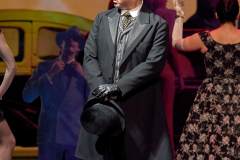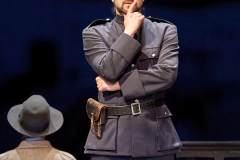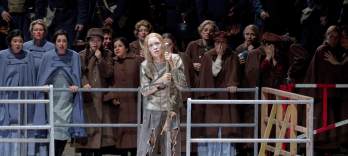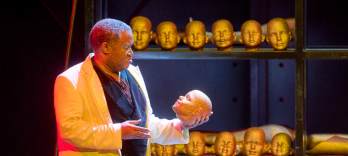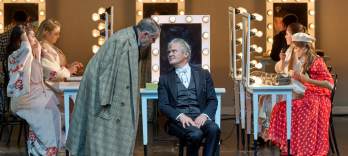Manon
November 2024 | ||||||
|---|---|---|---|---|---|---|
Mo | Tu | We | Th | Fr | Sa | Su |
ACT 1 - 3
In an inn at a passing station in Amiens, the rich Guillot de Morfontaine and the tax tenant Brétigny enjoy themselves with their three friends Poussette, Javotte and Rosette.
When the arrival of a group of travelers is announced, the curious in the immediate vicinity gather, including the guardsman Lescaut, who is supposed to pick up his cousin Manon and escort her to the convent. The young Manon is indeed among the arrivals and enchants all those around her with her beauty, including Guillot, who offers the girl a life of luxury in exchange for a love affair. Manon rejects the offer, but feels irresistibly attracted by the wealth. Then the Chevalier Des Grieux appears. As soon as the young nobleman sets eyes on the girl, he is already madly in love. Manon, who also takes a liking to him, flees with him to Paris.
However, the time the young lovers spend together is very short, as Manon finally gives in to the courtship of the rich Brétigny. The Chevalier Des Grieux is also forcibly abducted on the orders of his father, the old Count Des Grieux, in order to be put back on the right path. Some time later, Manon learns by chance that the young Des Grieux is about to enter the priesthood. She then seeks him out at the Saint-Sulpice monastery. After only a few seductive words, he succumbs to Manon once again and flees with her.
ACT 4 & 5
As Manon still doesn't want to miss out on luxury, Des Grieux is prepared to improve his financial situation by gambling at the dubious Hotel Transylvanie.
Guillot, who is there, stages a scandal, accuses Des Grieux of foul play and calls the police, who arrest Manon and Des Grieux. The latter is released by his father, but Manon is exiled to America. But the hardships in prison have broken her. She dies in Des Grieuxʼ arms on the way to the harbor.
ACT 1 - 3 ~ 95 MIN
INTERMISSION ~ 30 MIN
ACT 4 & 5 ~ 70 MIN
Program and cast
Manon Lescaut: Kristina Mkhitaryan
Chevalier Des Grieux: Vittorio Grigolo
Graf Des Grieux: Dan Paul Dumitrescu
Lescaut: Mattia Olivieri
Musical Direction: Emmanuel Villaume
Direction: Andrei Serban
Stage and Costumes: Peter Pabst
Vienna State Opera
Public Transport
Subway lines: U1, U2, U4
Trams: 1, 2, D, J, 62, 65
Buses: 59A
Local Railway: Badner Bahn
Stops: Karlsplatz / Opera
Taxi stands are available nearby.
Parking
Parking is only € 6, - for eight hours!
The Wiener Staatsoper and the ÖPARK Kärntner Ring Garage on Mahlerstraße 8, under the “Ringstraßengalerien”, offer the patrons of the Vienna State Opera a new, reduced parking fee. You can park in the Kärntner Ring Garage for up to 8 hours and pay only a flat fee of € 6, -. Just validate your ticket at one of the discount machines inside the Wiener Staatsoper. The normal rate will be charged for parking time greater than 8 hours. The validation machines can be found at the following coat checks: Operngasse, Herbert von Karajan-Platz, and the right and left and balcony galleries.
Important: In order to get the discount, please draw a ticket and do not use your credit card when entering the garage!
After devaluing your ticket in the Wiener Staatsoper you can pay comfortably by credit card or cash at the vending machines.
The machines accept coins and bills up to 50.- Euro. Parking time longer than 8 hours will be charged at the normal rate.
History
The structure of the opera house was planned by the Viennese architect August Sicard von Sicardsburg, while the inside was designed by interior decorator Eduard van der Nüll. It was also impacted by other major artists such as Moritz von Schwind, who painted the frescoes in the foyer, and the famous "Zauberflöten" (“Magic Flute”) series of frescoes on the veranda. Neither of the architects survived to see the opening of ‘their’ opera house: the sensitive van der Nüll committed suicide, and his friend Sicardsburg died of a stroke soon afterwards.
On May 25, 1869, the opera house solemnly opened with Mozart's Don Giovanni in the presence of Emperor Franz Joseph and Empress Elisabeth.
The popularity of the building grew under the artistic influence of the first directors: Franz von Dingelstedt, Johann Herbeck, Franz Jauner, and Wilhelm Jahn. The Vienna opera experienced its first high point under the direction of Gustav Mahler. He completely transformed the outdated performance system, increased the precision and timing of the performances, and also utilized the experience of other noteworthy artists, such as Alfred Roller, for the formation of new stage aesthetics.
The years 1938 to 1945 were a dark chapter in the history of the opera house. Under the Nazis, many members of the house were driven out, pursued, and killed, and many works were not allowed to be played.
On March 12, 1945, the opera house was devastated during a bombing, but on May 1, 1945, the “State Opera in the Volksoper” opened with a performance of Mozart's THE MARRIAGE OF FIGARO. On October 6, 1945, the hastily restored “Theaters an der Wien” reopened with Beethoven's FIDELIO. For the next ten years the Vienna State Opera operated in two venues while the true headquarters was being rebuilt at a great expense.
The Secretary of State for Public Works, Julius Raab, announced on May 24, 1945, that reconstruction of the Vienna State Opera would begin immediately. Only the main facade, the grand staircase, and the Schwind Foyer had been spared from the bombs. On November 5, 1955, the Vienna State Opera reopened with a new auditorium and modernized technology. Under the direction of Karl Böhm, Beethoven’s FIDELIO was brilliantly performed, and the opening ceremonies were broadcast by Austrian television. The whole world understood that life was beginning again for this country that had just regained its independence.
Today, the Vienna State Opera is considered one of the most important opera houses in the world; in particular, it is the house with the largest repertoire. It has been under the direction of Dominique Meyer since September 1, 2010.
Performances: Fr 11 Oct 2024,
Performances: Mo 23 Sep 2024,
Performances: Su 27 Apr 2025,
Performances: Mo 16 Dec 2024,
Performances: We 28 May 2025,
Performances: Tu 21 Jan 2025,

 EN
EN DE
DE IT
IT FR
FR ES
ES RU
RU JP
JP RO
RO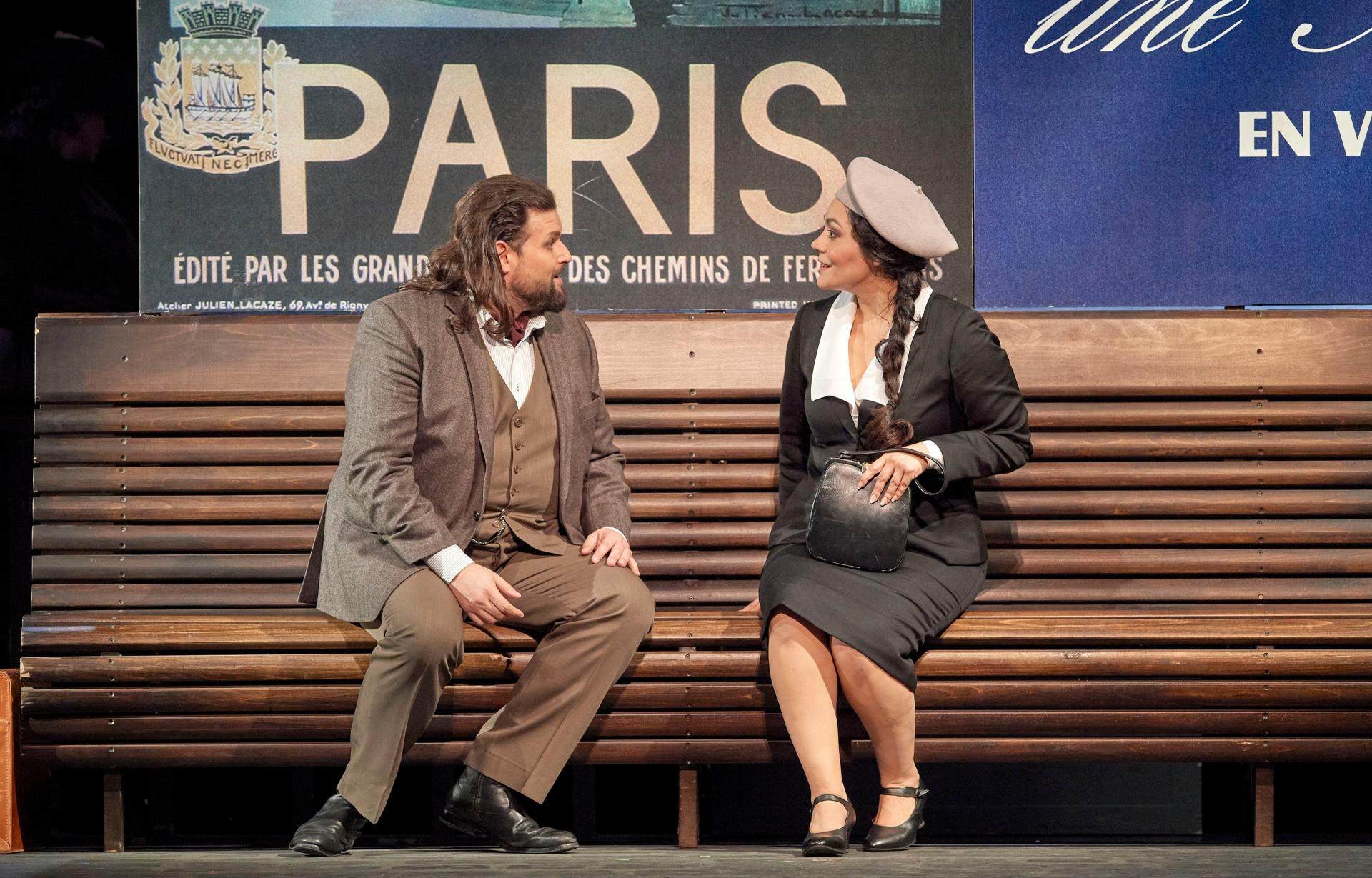
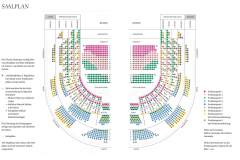 Seating plan
Seating plan 
